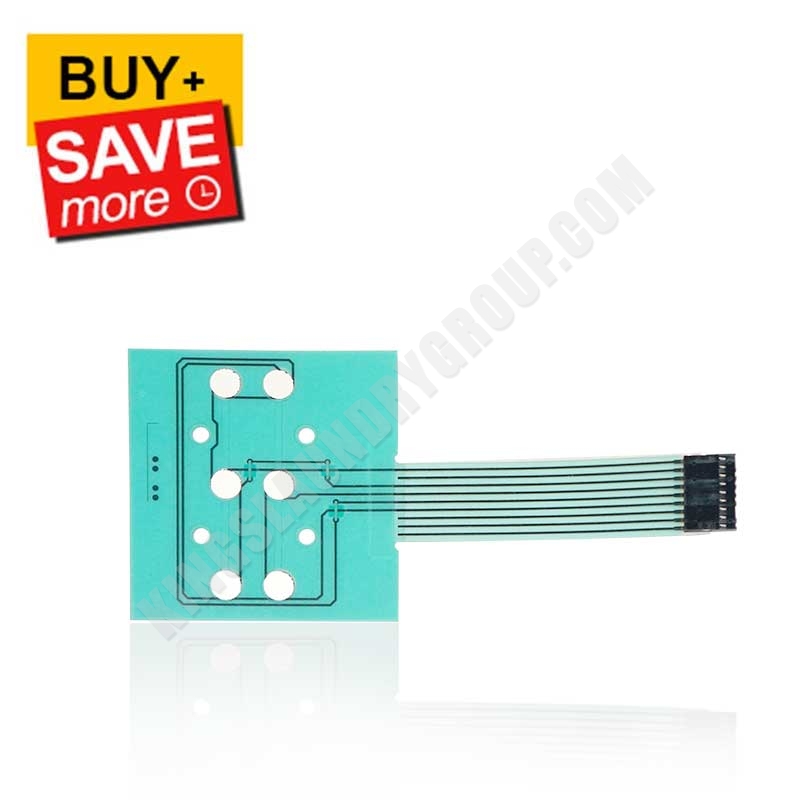Just How Membrane Layer Switches Over Contribute to the Toughness of Electronic Control Panels
Membrane switches play an important function in boosting the toughness of digital control panels, mainly via their multi-layered building which provides reliable defense versus ecological factors such as wetness and dust. The absence of moving parts significantly decreases the chance of mechanical failures, making membrane layer switches over ideal for demanding applications.
Definition of Membrane Buttons

Membrane buttons are created to be slim and light-weight, making them appropriate for applications where room is limited. They can be manufactured in various forms, dimensions, and colors, using adaptability in design that meets visual and useful demands. Additionally, membrane switches can incorporate numerous innovations, such as responsive responses and LED signs, improving customer experience.
As a result of their building, membrane layer buttons are usually resistant to dirt, dampness, and basic wear, adding to their longevity in demanding atmospheres. Their seamless layout not only helps with very easy cleansing however also reduces the risk of mechanical failure, making them a preferred selection for suppliers seeking reputable individual interfaces in their electronic control panels.
Defense Versus Ecological Aspects
The style of membrane switches naturally provides a degree of protection against various environmental factors, which is crucial for keeping functionality in tough conditions - Membrane Switch. These buttons are normally created with layers of adaptable products that shield inner elements from wetness, dirt, and contaminants. By encapsulating the circuitry, membrane layer changes minimize the danger of brief circuits and corrosion, which can substantially hinder efficiency
Moreover, making use of durable adhesives and sealers throughout manufacturing enhances their resistance to ecological difficulties. Membrane buttons can endure exposure to chemicals and solvents, making them appropriate for industries such as food processing and medical care, where hygiene and sanitation are paramount. Their smooth surface area style also protects against the buildup of dust and germs, assisting in easier cleaning and upkeep.
Temperature changes are one more ecological concern, and membrane layer buttons are engineered to operate efficiently throughout a wide variety of temperatures (Membrane Switch). This flexibility ensures that control board stay functional in various settings, from commercial settings to consumer electronic devices
Effect On Customer Communication
User interaction with electronic control panels is substantially affected by the layout and functionality of membrane switches. These switches give a tactile interface that improves the general customer experience, enabling intuitive navigating and control. Their responsive nature guarantees that individuals get instant responses upon activation, which is check this site out essential for jobs calling for accuracy and performance.
Moreover, the smooth surface of membrane switches facilitates very easy cleansing and upkeep, advertising user self-confidence in the reliability of the interface. This cleanliness is particularly important in environments where hygiene is critical, such as clinical or food processing settings. Additionally, the compact and light-weight layout of membrane changes adds to the aesthetic appeal of control board, encouraging customer engagement through a modern-day and streamlined appearance.
Moreover, the integration of visual aspects, such as printed symbols and backlighting, aids customers swiftly recognize functions, decreasing the learning contour related to new equipment. Therefore, individuals can operate tools better, resulting in click increased performance and fulfillment. In recap, membrane layer switches play an essential duty in boosting individual communication by incorporating functionality, looks, and ease of use, ultimately bring about boosted operational performance.
Layout Versatility and Customization
Style flexibility and personalization are vital facets of membrane layer buttons, making it possible for producers to customize electronic control board to particular applications and customer needs. This flexibility permits the combination of numerous style aspects, such as shades, graphics, and textures, which can improve the aesthetic appeal and individual involvement of the control panel.
Membrane layer buttons can be customized in shapes and size, view publisher site accommodating a variety of gadgets and applications, from commercial machinery to consumer electronics. This flexibility ensures that producers can develop instinctive interfaces that straighten with customer assumptions and operational demands. Additionally, the ability to integrate special attributes such as backlighting or tactile feedback further enhances usability, enabling a more interactive experience.
In addition, the manufacturing procedure for membrane changes sustains the fast prototyping of styles, making it possible for suppliers to iterate and refine their concepts quickly. This capability not only accelerates the development timeline yet also ensures that the end product meets specific functional and visual requirements.

Cost-Effectiveness and Durability
Cost-effectiveness and durability are considerable advantages of membrane buttons, making them an attractive option for manufacturers and end-users alike. These buttons are commonly less costly to create than conventional mechanical switches, largely as a result of their simplified manufacturing procedures and the minimized number of parts needed. This expense advantage expands not just to preliminary production however additionally to lasting functional costs, as membrane switches typically call for less upkeep and have a reduced failure price.
Furthermore, the longevity of membrane layer changes adds to their overall worth. Built from durable products, they are resistant to ecological elements such as moisture, dust, and chemicals, which can lead to early wear in other switch kinds. The absence of relocating parts lessens mechanical failure, enabling membrane changes to keep functionality over prolonged durations.
This sturdiness is particularly helpful in applications needing regular efficiency under demanding conditions, such as medical gadgets and commercial tools. Ultimately, the mix of cost-effectiveness and durability makes membrane switches a financially sensible selection for suppliers, providing trusted remedies that endure the test of time while optimizing budgetary factors to consider.
Conclusion
In conclusion, membrane layer buttons substantially boost the durability of digital control panels via their durable building and protective features - Membrane Switch. On the whole, membrane layer changes represent a dependable and cost-effective choice for improving the long life and performance of electronic control systems.